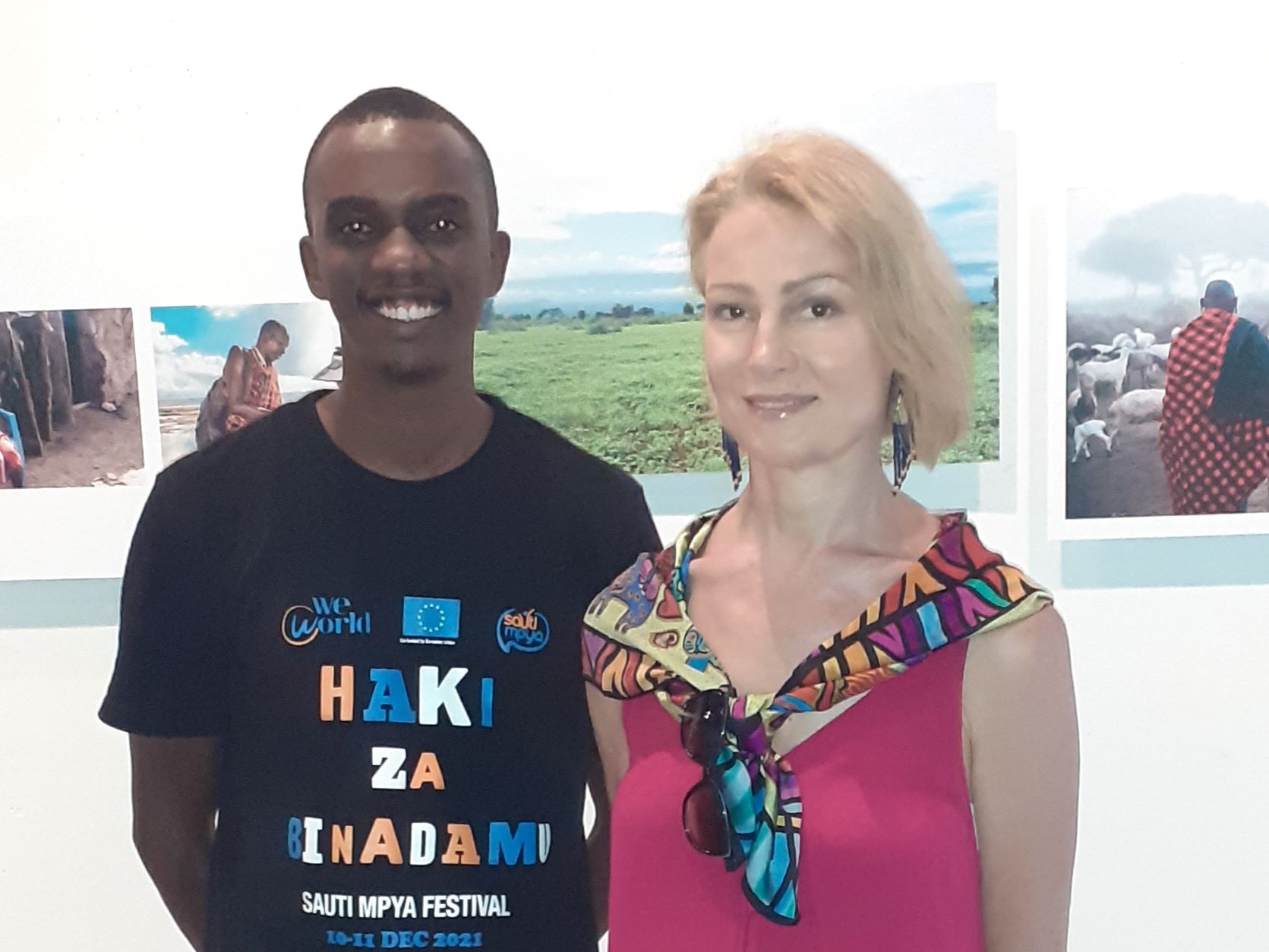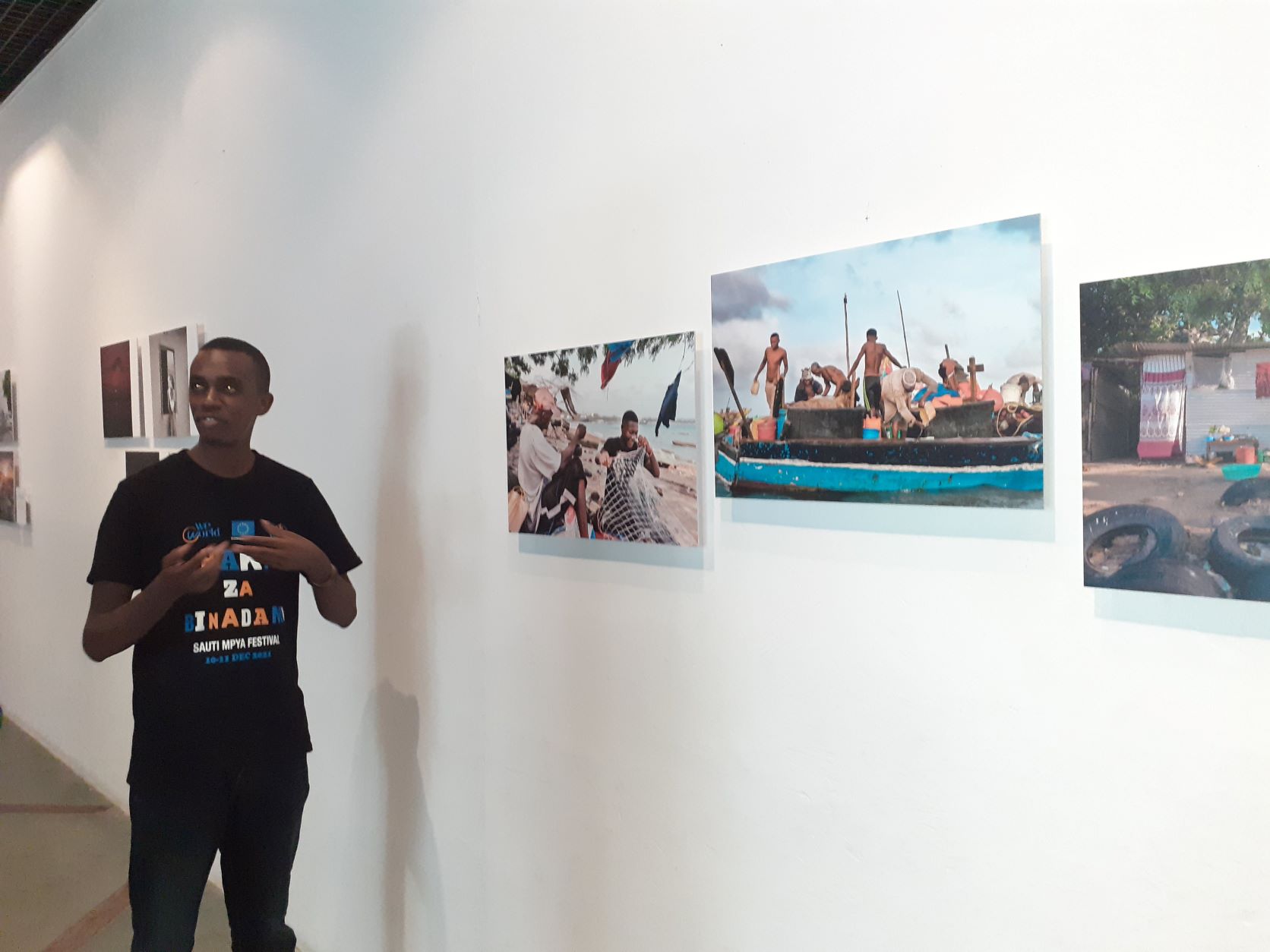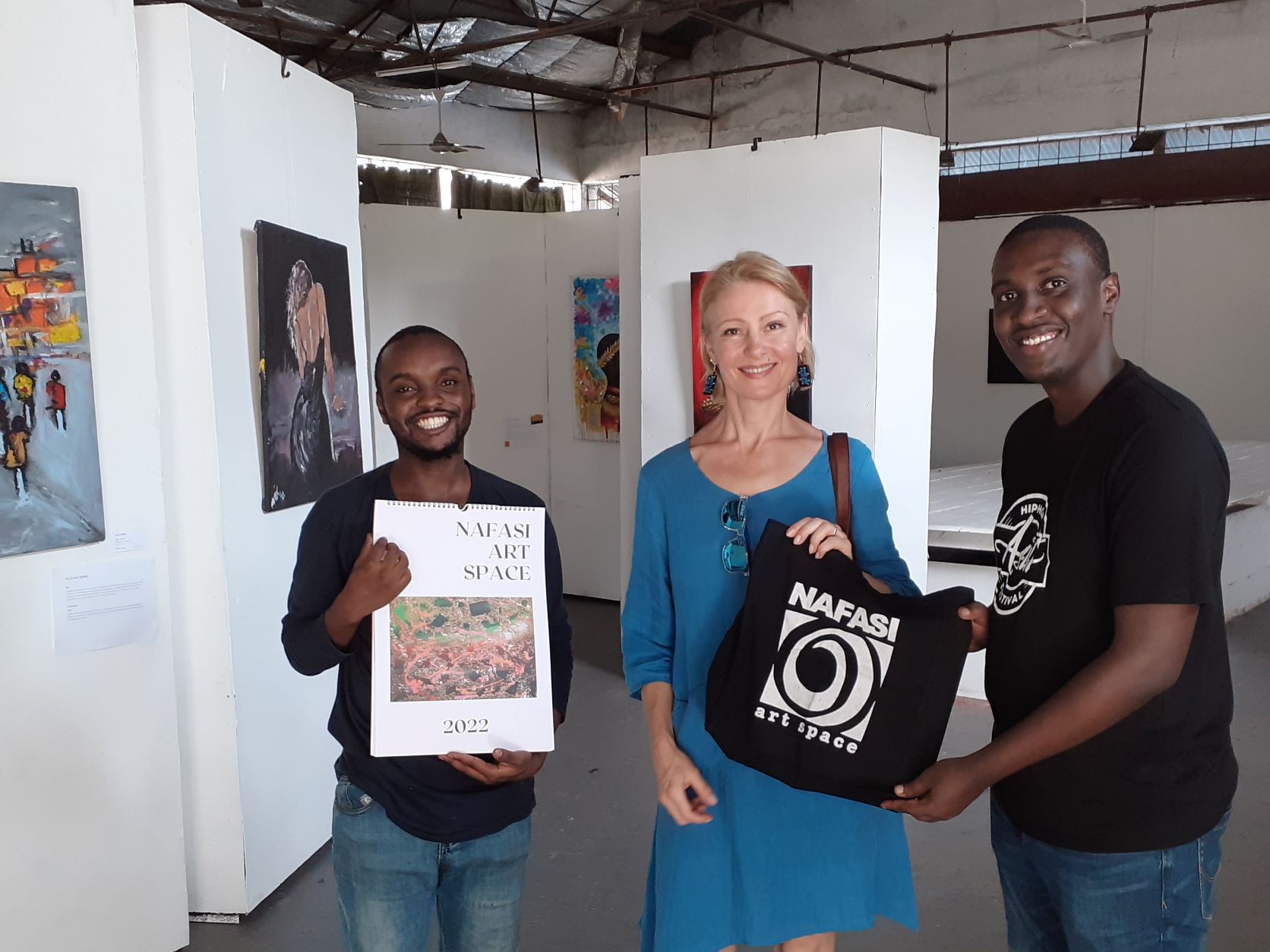Project participants from the National Museum in Szczecin conducted research in two countries on their Spring 2022 secondment, learning about collective initiatives among community-based artists, craftsmen and educators in Kenya (Ewa Prądzyńska, Katarzyna Podyma, Marlena Chybowska-Butler) and Tanzania (MCB) as part of ongoing efforts to engage cultural actors and assess their impact, as well as that of European culture, on artmaking in East Africa.
PART 3/4
A highlight of the NMS research into the Tanzanian Contemporary Art scene came at the Nafasi Art Space, a reclaimed plot located in an industrial section of Dar-es-Salaam that is a beehive of visual, performance and digital artmaking. As well, the 14-year-old collective provides educational opportunities in a country where formal instruction in artistic techniques and practices is extremely thin on the ground.
Nafasi features a dozen studios built from shipping containers, a pair of performance stages, several substantial exhibition spaces, classrooms and a digital laboratory that helps to supply works for its online gallery. Upwards of 20 artists working in a range of media call the space home. In addition, an active artist-in-residence program ensures a steady flow of creative impetus shuttles through the Nafasi community on a regular basis.
NMS team members were guided by Peter Lukuyami, Nafasi’s finance director, who administers an annual budget of almost EUR350,000. This is comprised mostly of donations from a coterie of core funders that include the Embassy of Norway, Germany’s Goethe Institute, Switzerland’s Pro Helvetia foundation, and SDC, the Swiss cultural development agency. Some of that money is being put into a facilities development at Nafasi, where building works were ongoing and on several projects at the time of our visit.
While at Nafasi, NMS researchers spoke with German painter and illustrator Klaus Hartmann, whose residency is culminating in late March 2022 with a show of the drawings of buildings he made on a rail journey from Zimbabwe to Dar-es-Salaam. Hartmann’s presence is indicative of the European influence on Nafasi that reaches beyond sources of funds. Hartmann lauded the center and his time in the country, noting that the Nafasi’s facilities provided ample room to create in industrial hall that Nafasi has converted to studio space and an exhibition room, which also houses the collective’s offices.
Painting and sculpture were displayed at various points on the Nafasi grounds made by the collective’s artists and students. Graphics created at Nafasi hung on the walls of the shipping container housing the collective’s digital lab.
The visit yielded a meeting with Pius Matunge, a participant in the Nafasi Academy for Contemporary Art, Expression and Inclusion. Hailing from the up-country art capital of Arusha, Pius co-curated an exhibition hosted by the Alliance Francaise in central Dar. He guided researchers through a show of four photographers whose work focuses on climate change in East Africa. He said that Nafasi Academy helped him to learn about exhibition preparation and presentation, as there are no formal curatorial studies classes offered at Tanzanian schools and universities.
Like its Mombasa counterpart, the Alliance Francaise in the capital appears a vivid cultural hub. In addition to art exhibitions, there is a regular concert series that takes place on a large stage in the courtyard a complex of buildings situated on a waterfront site near the downtown.





